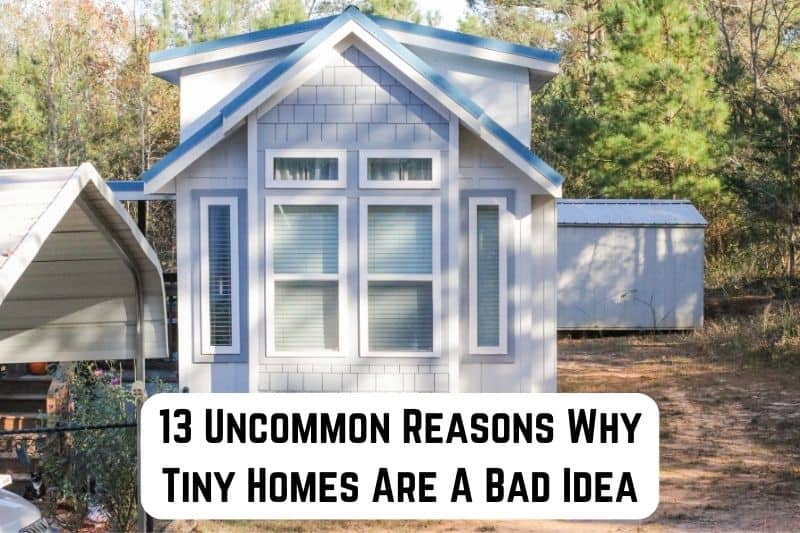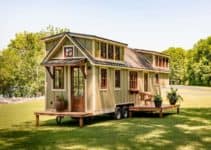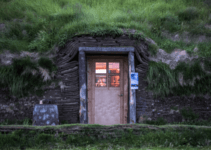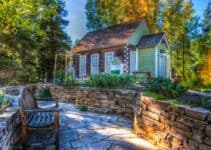Simplifying one’s lifestyle to reduce debt and save money has gained popularity thanks to reality TV programs like “Tiny House, Big Living” and “Tiny House Nation.” A tiny home is defined as one that is 400–600 square feet or less, depending on whatever definition you use. However, some tiny homes can be as small as 160–200 square feet.
People seeking sustainable living in terms of finances and the environment may get interested in tiny homes due to the recent unrest around them. However, what appears attractive on reality TV may be less tempting in real life, particularly if you have kids. Do your homework and determine the cost of purchasing a little house before making a costly error. Here are 15+ strong reasons why people move out of tiny homes.
Read: How To Dispose of Fireplace Ashes Sustainably?
13 Uncommon Reasons Why Tiny Homes are a Bad Idea
There are a few different types of tiny homes. Traditional stick-built or modular homes with permanent foundations are the most expensive. Another popular style uses conventional building materials but is built on a mobile trailer instead of a foundation.
You can also turn a shed or storage container into a tiny home using the structure as the shell. All of these types of tiny homes may have similar issues. Read on to learn why you should reconsider buying a small house.
1. Tiny Homes are Expensive
The average tiny house costs more per square foot than larger houses, partly because larger building projects require more resource efficiency. However, small homes are not significantly less expensive to create than larger ones.
HomeAdvisor says the average cost to build a 2,000-square-foot home is approximately $150 per square foot. In contrast, tiny homes built by Tumbleweed Small House Company, one of America’s most well-known tiny-house builders, usually cost more than $300 per square foot.
2. Financing Can Be Difficult
Your tiny house will only be eligible for conventional mortgage financing if it complies with zoning and building code requirements and is constructed on a solid foundation. You will require alternative financing, which may have higher interest rates and demand a higher credit score than a mortgage loan.
Such financing includes an R.V. loan, a personal loan, or a credit card. For instance, to qualify for an R.V. loan from Good Sam Finance Center, your credit score must be 690. If you wish to pay cash for a unit that costs between $10,000 and $50,000, the minimum credit score requirement rises to 740.
3. Tight Space
Living in a tiny place means lessening your environmental impact. Physical and carbon-based. One way to achieve this is by downsizing. Less energy will be used automatically to maintain a smaller area. Consider the utilization of gas, electricity, and possibly water and sewers. Add to that that you generally have less room to be concerned about.
But only some people are a good fit for the cramped area. A tiny house typically has a floor size of 400 square feet, as per the International Residential Code, Appendix Q. However, a more expansive interpretation states that a tiny house can be up to 1000 square feet.
Furthermore, because more people live in little houses, cleaning is required more frequently, even if cleaning is more straightforward in tiny homes. When not in use, items must be returned to their proper places to prevent the house from seeming too crowded with so many people living there.
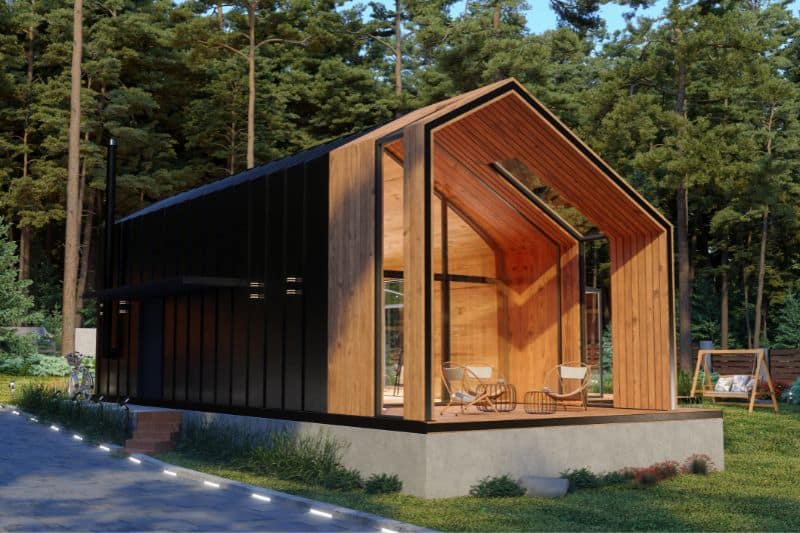
4. Insurance is Hard
Additionally, since tiny house insurance is nonexistent, obtaining insurance presents an additional challenge. There are assurances if you hire a business to build your small home. However, many insurers won’t pay if you wish to make one yourself.
Speak with a local insurance agent before taking action if you believe your family would benefit more from a do-it-yourself approach! Sure, tiny dwellings fall under the RV category, in which case RV insurance becomes available. It seems like a complicated procedure, and it is only applicable if your little house has wheels and an axle.
5. Getting Approval isn’t Easy
The fact that many U.S. states view tiny houses as unlawful is another major problem for those who possess them. This may be because they are not constructed to a government-approved safety standard or because the relevant jurisdiction still needs to update its codes to incorporate them.
Finding a location for tiny homes might be difficult because they are not typically included in municipal zoning rules. Because of this problem, parking a mobile tiny house in a friend’s or relative’s yard is forbidden in many areas without paying rent.
Nonetheless, the Tiny Home Industry Association (THIA) is working to legitimize tiny dwellings with more uniform rules and specifications. They have defeated Los Angeles thus far, a significant start in the right direction. However, finding a spot to put their small homes will remain an issue for tiny homeowners until the rest of the US does the same.
6. Privacy is Difficult
Maintaining the family’s mental health and well-being in a home requires privacy. There may be more room for everyone to have their place. Thus, it can be challenging for someone to do so. Yes, a lot of tiny homes have lofts.
But because they lack a door, these are frequently accessible from any part of the house. This means your privacy is gone with just a glance up from anyone. You could try hiding in the bathroom, but you would be in serious trouble if someone needed to use the restroom.
7. Limited Storage
A tiny home’s limited storage may deter many people from becoming owners. Although “secret departments” might seem reasonable initially, it might not work out in the long run. Even though you can keep whatever you need, wanting to buy new things and the thought of having spares can cause problems like shoes, towels, clothing, and so forth.
All these kinds of goods can be worn with use and time. Not to the extent that you have to discard them, though. Furthermore, food storage might also be a problem, as the kitchen frequently needs more room. And if you have a pantry, you’re in luck.
8. Small Lofts
An upstairs loft is a common feature of tiny houses, usually used for sleeping quarters or additional storage. But because they frequently have low ceilings, knocking your head at night is easy. What if you experienced a nightmare?
Additionally, the fact that they are upstairs or require ladders can be a nuisance at night when you need to use the downstairs bathroom. It’s a tad bit risky while the house is dark. Moreover, you can only turn on the light unless it is to awaken everyone in the house.
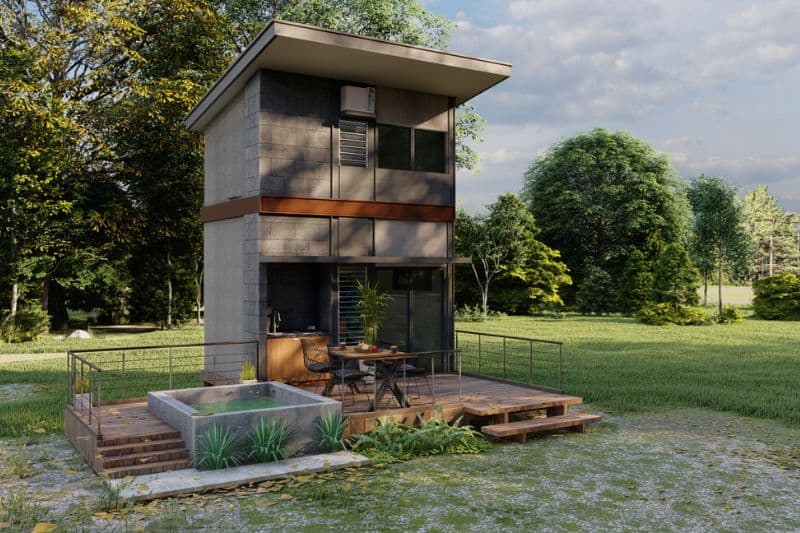
9. Tiny Living isn’t Always Functional
Although tiny living is a straightforward life, it can be chaotic. Low ceilings and cramped transition areas are common in small residences, forcing occupants to continually duck and squeeze as they cook, clean, take showers, and get into bed. When you need more space for meals, even ordering takeout becomes difficult.
10. Outdoor Gatherings
This implies that social events with relatives and close friends must be outside due to space constraints. Spreading your legs is expected, so inviting guests over ensures an outdoor gathering. When it pertains to the weather, this could be problematic. This is where unexpected rain comes into play.
Imagine you are planning a birthday celebration for your 30th or 60th birthday, and you have invited 20 of your closest friends. It’s more complex than moving it inside when it’s going to rain. Unless everyone remains motionless in the area and stands, doing this wouldn’t be enjoyable.
11. Always Moving Something Around
Assume that you possess a Murphy bed that, when not in use, can be folded into the wall. However, you would have to move the chair if it was in the way of pulling down your bed since it would be in the way of something else. Since you would need to arrange specific objects precisely, this also applies to kitchen and closet storage.
This may be advantageous if the products are not needed. However, if you bring them, you must intend to use them. You need to move a few others to get to the desired object. It can get tiresome and time-consuming after a while. Definitely after a challenging day.
12. You Might Have To Buy Land
You might not be safe even if zoning regulations permit you to construct or park a tiny house. These restrictions can also stipulate the minimum size of the property your home must be built on and require you to own the lot, which makes it a costly prospect.
Even in a town like Spur, Texas, where tiny homes are openly welcomed, the city promotes lot sales that cost up to $42,000. However, most of these lots have buildings that would need to be demolished, and you would still need to excavate according to town ordinances and build a firm foundation for the house to sit on.
Read: Are Zoos Good or Bad for the Environment?
13. You Might Get Stuck With It
It will be challenging to find a buyer if you decide to sell your modest house. Because fewer people are willing to live in 400 square feet or less, tiny homeownership has more significant entrance obstacles than standard homeownership.
Conclusion
If you don’t have many pets or kids, there are many advantages to living in a tiny house. Tiny homes are trendy, but it does not mean that everyone should live in one. More space and storage, in particular, are preferences for some people. And while living in confined spaces, the absence of privacy and the latter is a big problem.
Even when you go outside, things are frequently different. You are also confined inside if it rains. Hence, rather than moving into a smaller house, consider looking into a large apartment or a small home if you value privacy and space, particularly if you are expecting or have a family.
